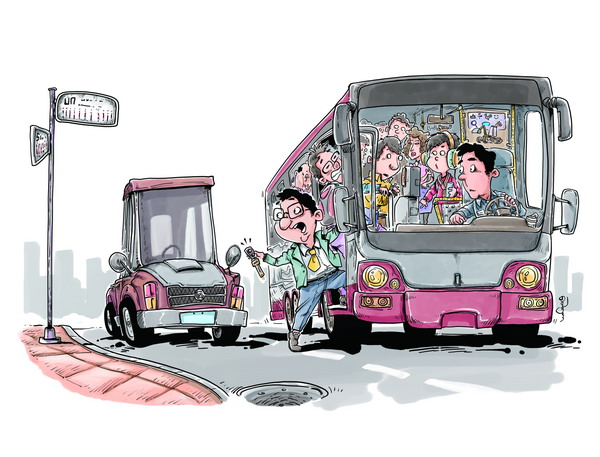|
 |
To decide how to get around in Beijing requires weighing cost and convenience. A traditional bus measures up well in both criteria.
Since last year I've given up driving and taken the bus to work every day, which has aroused quite a bit of curiosity among colleagues because bus riding is still a rarity in my office.
My easy explanation about the change is that after navigating the streets in one of the most congested capitals in the world for more than a decade, I'm tired of driving, and taking the bus allows me to think before my work starts. I also like to be given a ride home after a long, rough day.
But most of my colleagues, especially the younger ones who aspire to own a car, have responded with disbelief, as they picture me walking to the bus stop under smoggy skies, stuck in a packed, rumbling bus and constantly leery of jostling, bad breath, loud talking on cellphones and dirty shopping bags.
I believe they would be amused if they read the findings of a study of British workers, which found that commuting by bus or train has "the beneficial effects of being physically active, as most journeys will involve walking to the station or stop but also include time to read or talk to friends while traveling", according to recent British media reports.
Perhaps everybody would be more convinced if I told them that I take the bus because it's dirt cheap, while driving a car is expensive and inconvenient.
A bus trip costs 0.4 yuan or 6-7 cents with the use of a stored value card, which is almost free if you consider a Coke costs five times that or more. Beijing has a flat-rate subway fare with unlimited transfers of 2 yuan per single-trip ticket. I would take the more comfortable subway, if it was closer to my home and workplace.
|
|
|
|
|
|
|
|
